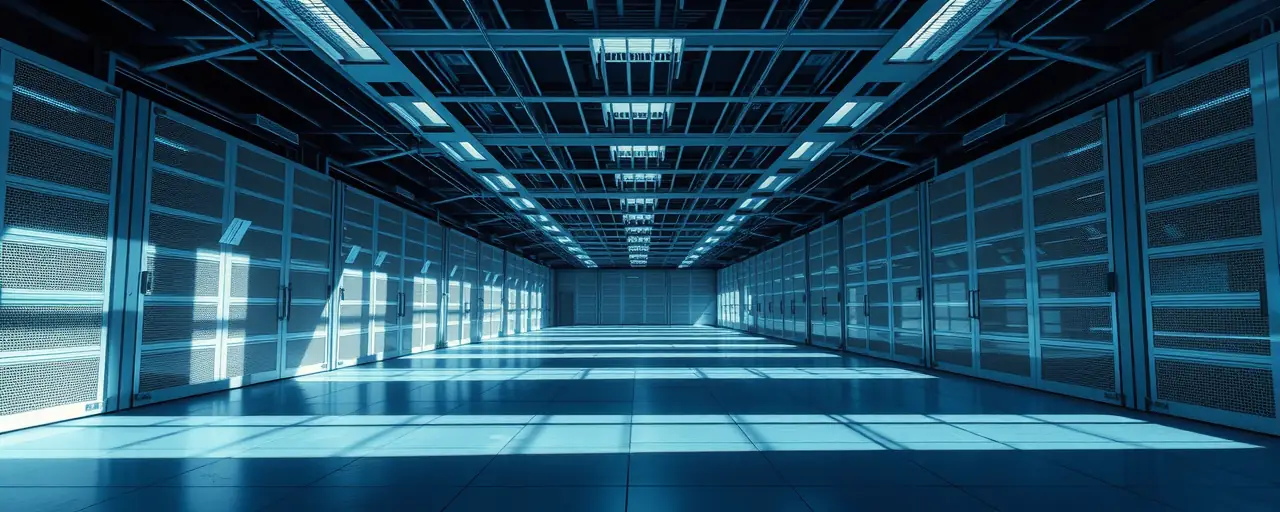The Data Center Scare Doesn’t Hold Up
Tech giants and their data centers are under fire, accused of pushing America’s electric grid to the brink. Forecasts from groups like the Electric Power Research Institute claim these facilities could consume 9% of U.S. electricity by 2030. But Joe Dominguez, CEO of Constellation Energy, just dismantled this narrative. The numbers, he says, are inflated, and the panic is overcooked.
Dominguez, whose company supplies power to millions, points to hard evidence. Data centers have grown from 0.5% of U.S. electricity in 2000 to about 4.5% in 2023, according to Lawrence Berkeley Lab. That’s significant but far from catastrophic, especially since computing power surged eightfold in the same period. Innovations like advanced cooling, efficient chips, and cloud optimization have kept energy use in check.
Still, the dire warnings keep coming. Some policymakers and renewable energy advocates seize on these projections to demand sweeping grid upgrades and federal spending. Their argument hinges on fear: data centers will overwhelm the system unless we act now. Dominguez’s insight reveals the disconnect. The data doesn’t justify the alarm, and the push for drastic measures often serves agendas that value ideology over evidence.
This matters to every American. Overblown forecasts can lead to overbuilt infrastructure, hiking electric bills for families and businesses. Worse, chasing untested solutions risks blackouts when reliable power is what keeps communities thriving. The real picture is clear: data centers are a manageable challenge, not a crisis.
Innovation, not regulation, is already meeting the moment. Markets are proving they can handle the load without government overreach.
The Grid Can Take the Heat
The North American Electric Reliability Corporation projects a 122-gigawatt rise in summer peak demand by 2034, alongside 115 gigawatts of plant retirements. That’s a hurdle, but not a collapse. Grid operators are responding with practical steps: faster interconnections for new power plants, reformed capacity markets, and expanded day-ahead trading to balance supply and demand.
History shows the grid’s resilience. From the 1965 Northeast blackout to 1970s fuel shortages and 1990s transmission woes, the system has adapted through innovation and competition. Today, utilities use AI-driven tools to forecast demand with precision, optimize power flows, and integrate distributed solar. These advances keep the lights on without heavy-handed mandates.
Yet some voices, particularly those tied to renewable energy mandates, argue for a different path. They prioritize wind and solar, downplaying their inconsistency. House Republicans have consistently warned that phasing out coal plants too fast, driven by environmental rules, threatens the steady power data centers and households rely on. Their point holds: coal and gas deliver when renewables falter, especially during extreme weather.
Data centers aren’t destabilizing the grid; they’re spurring solutions. Tech firms like Amazon and Google have contracted over 34 gigawatts of renewable power and are deploying behind-the-meter solar and storage. This private investment, not government directives, is aligning energy needs with market realities.
Regulation Risks Reliability
If data centers aren’t the culprit, what’s the real threat? Overzealous regulation. Federal Energy Regulatory Commission Chair Willie Phillips and allies advocate for transmission reforms and clean energy tariffs to boost wind and solar. These policies promise green progress but raise costs for consumers. Expanded cost-sharing schemes force ratepayers to fund transmission lines for distant renewables, often with little local benefit.
The push for renewables also sidelines reliable power sources. The Trump administration’s Department of Energy emphasized preserving coal capacity to prevent blackouts, a stance echoed in President Trump’s current term, which began in 2025. Reliable energy isn’t negotiable, yet some policymakers prioritize experimental sources over proven ones, using data centers as a pretext for stricter mandates.
This pattern isn’t new. Since the 1970s, environmental rules have added costs to utilities, inflating electricity prices. The 2009 stimulus funneled billions into smart grids, but blackouts persist when funds chase ideology over resilience. Americans need policies that prioritize affordability and stability, not compliance with rigid agendas.
Markets Point the Way
The solution to data center growth lies in freedom, not fear. Tech companies, facing rising energy costs, are driving efficiency and investing in private power systems. Constellation Energy’s Dominguez sees it daily: firms are using less energy per operation, much like the 2000s when virtualization and cooling tech curbed data center power growth.
Policymakers should follow this lead. Speed up permitting for new gas and coal plants to ensure steady power. Encourage private investment in nuclear, which delivers consistent, carbon-free energy without renewable variability. And reject cost-shifting policies that burden consumers for unneeded infrastructure. The grid can support data centers if markets, not bureaucrats, call the shots.
Americans deserve power they can rely on at prices they can afford. Dominguez has exposed the data center scare for what it is: a distraction. The focus belongs on what delivers—innovation, competition, and dependable energy. That’s the path to a stronger grid and a brighter future.
